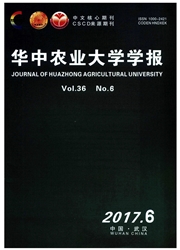

 中文摘要:
中文摘要:
代谢网络的研究是当前的一个新热点,越来越多的证据表明对代谢网络的拓扑结构进行分析有助于理解细胞的行为和生命现象。本研究首先从KEGG数据库中获取了苏云金芽胞杆菌的基因组与所有代谢途径信息,构建了基因-酶以及酶-反应的列表,并参照Ma和Zeng所建立的数据库对所得的列表进行必要的修正。然后,用节点表示代谢物,连线表示代谢物之间的反应,即用代谢物图来表示所得的代谢网络,该网络包含了830个节点,1132条连线。随后,基于代谢网络的蝴蝶结结构对该网络进行模块划分并提取了网络的最重要组成部分:巨强连通体。最后,分析了巨强连通体及其10个关键节点的生物学功能意义。
 英文摘要:
英文摘要:
The genome and all metabolic pathways of Bacillus thuringiensis were obtained from KEGG database,gene enzyme and enzyme reaction associations were constructed and revised these associations according to Ma and Zeng's Database. The metabolic network was reconstructed which has 830 nodes and 1 132 links is represented by so-called metabolite graph in which the nodes are metabolites and the links are reactions. Subsequently, the network was compartmentalized based on its bow tie structure and the most important part giant strong component (GSC) was distilled. At last, a functional analysis of GSC and the top 10 hubs with its biological signification was analyzed.
 同期刊论文项目
同期刊论文项目
 同项目期刊论文
同项目期刊论文
 期刊信息
期刊信息
